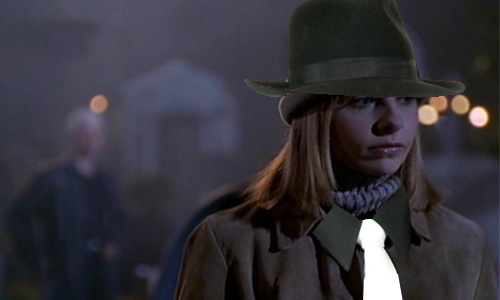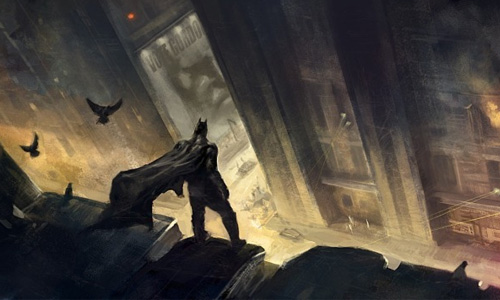John Green’s novel “Paper Towns” is an exercise in double-meanings, saying one thing and showing another, asking its readers the same thing it’s asking the characters: when we look at someone, do we see a window, or do we see a mirror?
John Green is the Macklemore of young adult fiction right now – he seems to have appeared out of fucking nowhere to become a mega-star in his field. I’m not saying Green (or Mackelmore) sold their souls to the devil, but I am saying they could probably point you to the nearest crossroads. He’s the scribe who scrobe (?) the ridiculously popular “Fault in Our Stars,” which is coming to movie theaters June 6th. Which is this week, as long as you’re not reading this from the far future. Are you? How was Episode VII? Sorry, sidetracked.
The Book – Spoiler-free Review
“Paper Towns” is about a high school kid named Quentin, “Q” to his pals, who is drawn into a mystery by his childhood crush Margo Roth Spiegelman. The book follows Q and his friends in their last few months of senior year, dealing with end-of-school hallmarks like prom and graduation parties while juggling the search for a disappeared classmate.
It took me awhile to decide to read “Paper Towns,” because I’m a novel writer myself and I get painfully jealous when a new author explodes into super-stardom. Shallow, yes. Honest? Absolutely. I’d also gotten a hipster vibe from his whole persona, which is also shallow. What I’m saying is, I’m shallow. Anyway, my wife convinced me to give it a shot, calling it “Goonies meets a Detective Mystery,” which is a completely fucking unfair way to rope me into something. I haven’t been so easily convinced since the Dresden Files box set said “Philip Marlowe meets Buffy the Vampire Slayer.”

I finally downloaded the book and read it all in a matter of days. I probably would have cranked it out in a single day if I was unemployed. Sigh. We can all dream. Anyway, this is the section where I review the book for non-readers.
The book is technically “young adult,” but like most quality fiction, it transcends. It isn’t FOR kids, so much as it is ABOUT kids. I’m sure a teenager would get a lot out of the novel, which is where the lesson in duality begins. “Paper Towns” is two books, which is its greatest strength. There’s “teenager mode” and “adult mode,” and the best part is that you read them both at the same time. I highly recommend this book, but only if you keep your brain open and make sure it has room to wriggle around. Take nothing at face value.
The book’s language is honest, it nails teenagers (for the most part), and the level of interpretation it allows you is staggering. The main thrust of the story is about Margo Roth Spiegelman, the prototypical “Manic Pixie Dream Girl,” and how her wacky lust for life and rejection of social norms leads Q and his friends into adventure. Whether or not the novel is the perfect example of the trope or a complete deconstruction is up for grabs. Go find out for yourself, you won’t regret it.
The Discussion – All the Spoilers
Okay, let’s get dangerous. Slash spoilery. Have you read the book? Good. Let’s fucking do this.
Here are two statements. Tell me which one is true.
Statement one: “Q” is a romantic truth-seeking adventurer, risking life and limb for the girl he loves and never giving up when the going gets hard.
Statement two: “Q” is obsessed and tragic, lost in his own fantasy of a girl he doesn’t even know and is ruining his life to pursue nothing.
I would argue that either could be true, depending on how you read the book. It’s a “choose your own moral,” which fits perfectly with the theme of the book. We don’t know people, we project onto them. Replace “people” with “art” and you have this novel.
This is where “teenager mode” and “adult mode” come in. As a teenager, I would have read this book and been like “Fuck yeah, Q! Skip prom and graduation, follow your dreams! Save that girl from herself!” Reading the novel as an adult (sort of), I can’t help but think that “Q” is completely lost in a fantasy, and is so desperate for excitement that he’s tanking his life for what amounts to a picture in his head that never really existed. Here’s the goddamn twist – I think both might be right. Reading the book, I was bouncing back and forth between both positions from chapter to chapter. I experience the “ahhh yeah” of teenage mode and the “uh oh” of adult mode, simultaneously.

Let’s start with Q. As the narrator, Q provides our window into the story. Or our mirror, depending. Q claims to be many things, and claims his friends are many things, but we see that his observations are seldom correct. Q calls himself an outcast, a geek, a loser, but he’s got the ear of the most popular girl in school and EVERYONE he runs into over the course of the story knows who he is and treats him with respect, for the most part. Even the school bully doesn’t give him shit, and all the popular kids know his name.
As for claiming to be a geek, he shows no geek tendencies besides playing video games and having good attendance. Considering the complete saturation of blockbuster video games in popular culture, that could arguably stricken from the “geek” list altogether. He’s clearly more in love with the idea of being an outcast than actually making any effort to become one.
Let’s look at his friends. Ben and Radar are “losers,” you can tell because they’re in band. Ben is the tragic wannabe Casanova, according to Q, and Radar is the semi-traditional black nerd. Ben displays no real geek hallmarks, and doesn’t seem to be much of a failure with the ladies like Q reports. Ben even bags one of the hottest, most popular girls in school halfway through the novel. At the graduation party, Ben practically becomes the most popular dude with record-breaking keg stands and hilarious Beer-swords.

Radar spends a lot of time on the fictional version of Wikipedia as a dreaded article editor, which is certainly solid nerd cred. However, he also has an attractive girlfriend and throws a massive party that all the cool kids go to without comment.
None of the guys are bullied, none of them have trouble with the ladies, and their geek pursuits are fairly innocuous or non-existent. I’m not saying John Green is a bad writer, I’m saying Q is a man of self-delusion. The most damning evidence comes in an off-hand line about finishing a school project – Q mentions writing a paper about “Moby Dick” and deciding that Captain Ahab is the hero of the story.
It’s no surprise then, the actions he takes to find Margo Roth Spiegelman. I was turned off near the beginning of the book, thinking that this was going to be another foray into the “Manic Pixie Dream Girl” genre. If you’re not familiar with the term, it’s basically just a derogatory expression for a perceived cliché – the female character that is just a quirky muse for the male protagonist. She listens to weird music, she’s counter-culture without being defined into a counter-culture group, and she breaks the law in funny ways. She’s a quest, not a person, a kind of trickster mentor for the male protagonist to teach him a lesson and make him a better person. Natalie Portman has made a career out of playing these types of character – Zooey Deschanel too. I actually don’t hate the use of the trope as much as many people do, but it can be exhausting if you’re not in the mood for it.

Early on, Margo Roth Spiegelman, the fey, mercurial, gorgeous, popular girl who’s quirky and mysterious shows up at Q’s window in a black hood and black face paint and tells him it’s time to go on an adventure. I rolled my eyes so hard I thought I would break the top of my skull. This is the most dangerous part of the book, before the deconstruction begins, and it was difficult for me to slog through. I’m glad I stuck through it, because the cracks in Margo Roth Spiegelman’s persona begin to show early on. During her midnight revenge heist on all those who wronged her, it becomes quickly apparent that she isn’t some perfectly wise spirit-of-freedom. The disproportionate retribution she takes on her “friends” is staggering, involving real vandalism and pretty serious crimes – she even admits that one of them didn’t really deserve it, and might have had nothing to do with her boyfriend cheating on her at all.
Q goes along with it because Q is in love, but he’s uncomfortable and terrified. He starts to enjoy it, falling into the understandable fun of causing havoc in the wee small hours of the morning. Still, even Q of the perpetual horse-blinders begins to notice that Margo Roth Spiegelman is obviously depressed, afraid, and possibly suicidal. Her persona is starting to buckle under its own weight – she HAS to do these things to maintain her reputation, rather than out of any real desire.
When she flees the state in the next chapter, it’s because the pressure of being a Manic Pixie Dream Girl has forced her to bail. Her only relief is disconnection – the fact that she’s run off multiple times means that she has to trigger that release valve constantly. Q tells us her parents are “terrible” by way of an excuse, but we never actually see any evidence in the story that the Spiegelman’s are anything but frustrated parents with a difficult daughter.
Margo Roth Spiegelman leaves clues behind after her disappearances, but everyone notes that the clues are only ever useful AFTER she’s come back. She doesn’t actually want anyone to track her down, she just can’t resist her Manic-Pixie tendencies enough to leave without mystique. Q sees a quest, because he’s not seeing the girl. When, at the end of the book, he finally does find her, she’s furious.
In many ways, Margo Roth Spiegelman is a female Holden Caulfield. She’s obsessed with “paper towns and paper people,” which is just her version of the word “phony.” She’s nihilistic, self-destructive, and completely lost. Holden makes up his own profession because he doesn’t believe he fits in the world, and Margo Roth Spiegelman does exactly the same thing with her “urban exploration.”

The novel is just the question “What would happen to someone who was in love with Holden Caulfield?” The answer is they’d break from frustration, which is exactly what happens to Q. He spends prom night in a rat-infested abandoned building, sniffing a blanket that smells like Margo Roth Spiegelman so he can “totally get in her mindset.” He’s gone off the deep end, and while his friends try to tell him, he isn’t listening.
Q calls Ben and Radar’s pursuits meaningless and “paper,” taking cues from his role model, but the fact is Ben and Radar are having the time of their lives. It’s the end of high school, and they’re going to prom and parties, getting girlfriends, making memories and saying a fond farewell to a big stage in their lives. Q, meanwhile, is obsessing over Walt Whitman and driving over half the state visiting old housing tracts.
The final act hinges on Q skipping graduation, not only disappointing his parents but depriving himself of an important moment. He manages to convince his friends to do the same, on the off-chance that Margo Roth Spiegelman MIGHT be in a fictional town, in an abandoned building, 22 hours away. It’s no surprise that halfway through the trip Q, falling asleep at the wheel, nearly kills all of them by crashing into a cow at 80 miles an hour. Ben manages to save them all through sheer luck, and despite injuries they CONTINUE THE QUEST.
When they arrive, there is no prize. Margo Roth Spiegelman is pissed the hell off to see them. She’s confused, spiky, and generally a complete pain in the ass. Q’s friends even leave him there to deal with Margo Roth Spiegelman alone. The story ends on a romantic moment, kind of. Except Q and Margo Roth Spiegelman are going separate ways – him back home, and she to New York and ports beyond. There’s some “yeah, I’ll see you maybe at some point” shuffling, but it’s clear that they are going in opposite directions, and they want different things.

The book ends on a kiss, but the implications are staggering. Q has wrecked the car his parents got him for his graduation present, he’s got his friend Lacey into hundreds of dollars of debt with her parents, all of them have missed graduation without warning (and are going to be in deep shit with their own parents), and Q has nothing to show for it. He’s going to go back home and that will be that. The amount of trouble his friends get in could lead to a lot of resentment down the road for Q – the very fabric of their friendship might have been damaged by a largely pointless quest for an indifferent girl.
Q, ever the romantic, will always pine for Margo Roth Spiegelman, a largely fictional image of a wholly damaged girl. Good luck settling down with Debby Normal after having gone on epic quests and solved twisted mysteries with Margo Roth Spiegelman.
But that’s the adult version. I also think Q is a badass, Margo Roth Spiegelman is a genius, and that the road trip to find her is one of the most hilarious and heartwarming things I’ve ever read.
Two books, for the price of one.



Comments